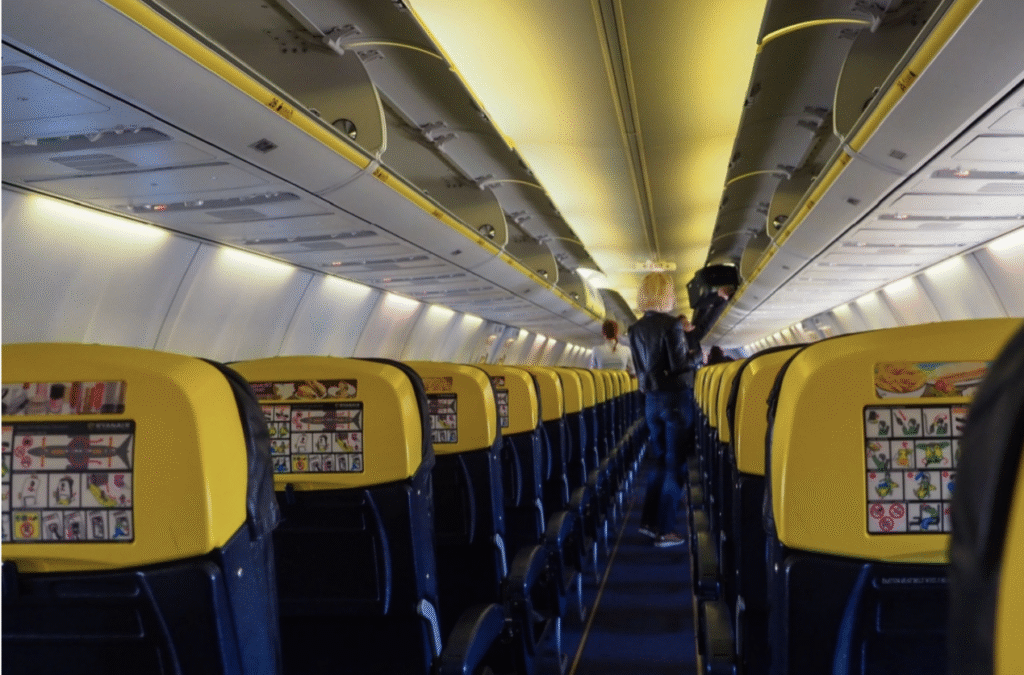When Michael O’Leary walked into Ryanair’s modest offices in the early 1990s, the airline was barely surviving. But under his leadership, the scrappy Irish carrier transformed into Europe’s largest airline by passenger numbers. How did this happen? It’s a tale of uncompromising cost-cutting, bold marketing, and a stubborn refusal to play by the rules—resulting in a low-cost empire that upended European air travel.
In 1992, Europe’s skies cracked open. EU deregulation ended the reign of national monopolies. Ryanair was primed to pivot—but needed the right strategy. O’Leary, taking the CEO role in 1994, adopted Southwest Airlines’ playbook: all-Boeing fleet, ruthless cost cutting, and ultra-fast turnaround times. The goal? Strip headline fares to the bone—even to zero—by making revenue through extras like baggage fees and onboard services WikipediaThe Wall Street Journal.
2. From Embraer to Boeing: Simplifying with Scale
Originally flying short operations between Waterford and London Gatwick, Ryanair adopted a leaner fleet strategy. By standardizing on Boeing 737s, they not only reduced maintenance costs but also accelerated scheduling efficiency. Faster turnarounds meant more flights per day per aircraft—critical for cost-efficiency in European short-haul markets Wikipedia.
3. Ancillary Revenue: Where the Money Hidden in Plain Sight Was Found
O’Leary didn’t stop at no-frills fares; he monetized everything else. Fees for airport check-in, baggage, priority boarding, and more turned out to be a goldmine—accounting for around 20% of Ryanair’s revenue by 2009 Wikipedia. As O’Leary once put it: “Other airlines ask how they can raise fares. We ask how we can remove them.”
O’Leary’s explosive personality wasn’t a bug—it was a feature. He relished controversy, knowing it brought media attention. In one infamous moment, protesters smashed a pie into his face—but within days, searches and bookings surged by 6% as people tuned in for the drama The Wall Street Journal.\
Ruthless Negotiations with Airports
When Ryanair demands rock-bottom fees or marketing support from airports, they often return to the negotiating table with serious leverage. In some cases, O’Leary threatened flight withdrawal—not a bluff. His tactics made secondary airports in Europe major beneficiaries of budget tourism, prioritizing profitability over passenger convenience Wikipedia.
Skyrocketing Growth: From Losing Money to a Billion-Euro Profit
Ryanair’s financials tell the story. In 2010–2013, annual revenues nearly doubled from €3 billion to €5 billion. Profits soared from €300 million to over €800 million Wikipedia. By 2024, revenue had climbed to €13.9 billion with a profit of €1.6 billion and passenger numbers nearing 200 million — an astonishing rise from its meager early days WikipediaThe Wall Street Journal.
Strategic Buying and Pandemic Resilience
O’Leary stayed opportunistic. He ordered large fleets during industry downturns—post-9/11 and mid-pandemic—securing aircraft at bargain prices while peers hesitated The Wall Street Journal. During COVID, Ryanair negotiated pay cuts with unions (a rare move for O’Leary) to retain crew and surge ahead when travel resumed The Wall Street Journal.
The Ryanair Culture: Love-It-or-Hate-It Efficiency
The airline may rank poorly in customer satisfaction surveys—enduring jokes about strict policies and extra fees—but O’Leary doesn’t apologize. He famously shrugged: “We love our customers, at least the 99% who obey the rules” The Times. He’s turned efficiency, not empathy, into the brand’s competitive edge.

The Leadership Behind It All
O’Leary’s long tenure—CEO since 1994—paired with visionary leadership from chairmen like TPG’s David Bonderman helped Ryanair sustain its bold growth strategy The Sun. Together, they navigated regulatory hurdles and capitalized on low-cost trends during the airline’s expansion.
Lessons in Business Disruption
Simplicity and ruthlessness can disrupt.
Ancillary revenue can drive margins when core margins are razor-thin.
Controversy, if managed well, becomes free marketing.
Opportunistic investing during downturns pays dividends.
Ignore critics if your business model thrives on efficiency, not approval.
Epilogue: Legacy in the Skies
Ryanair’s transformation from failing regional carrier to European aviation powerhouse didn’t happen by accident. It was the result of disciplined simplicity, aggressive expansion, and a leadership model that prized profit over polish. Love-it-or-hate-it, Ryanair flew in, took over, and rewrote the rules of short-haul air travel—under the watchful, provocative eye of its long-serving CEO, Michael O’Leary.
















